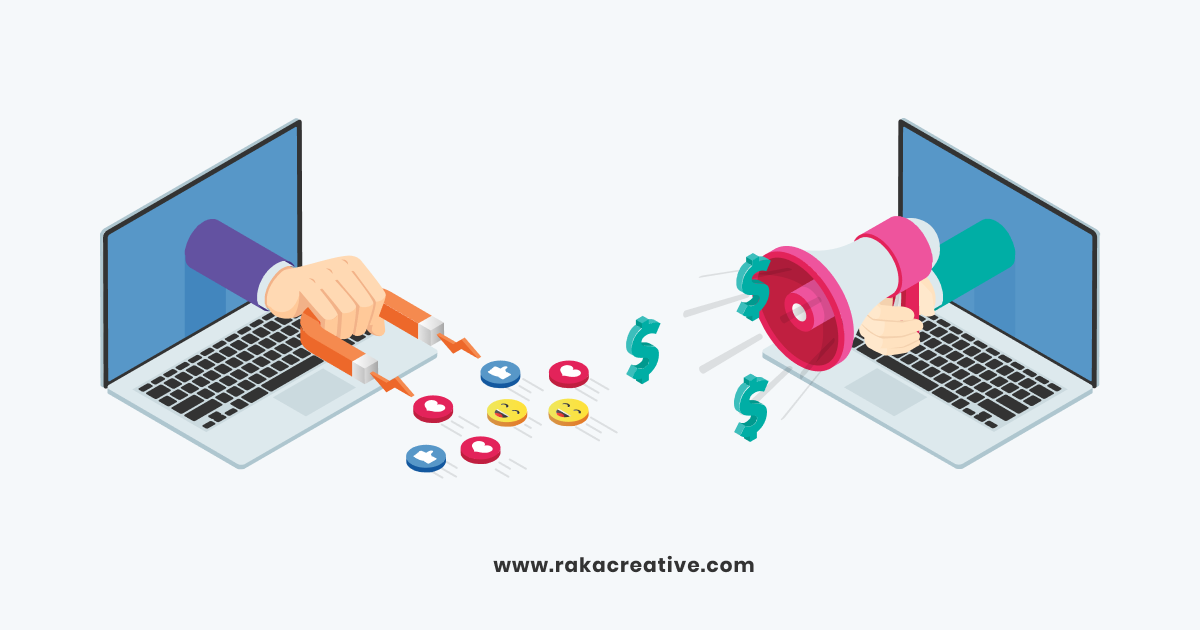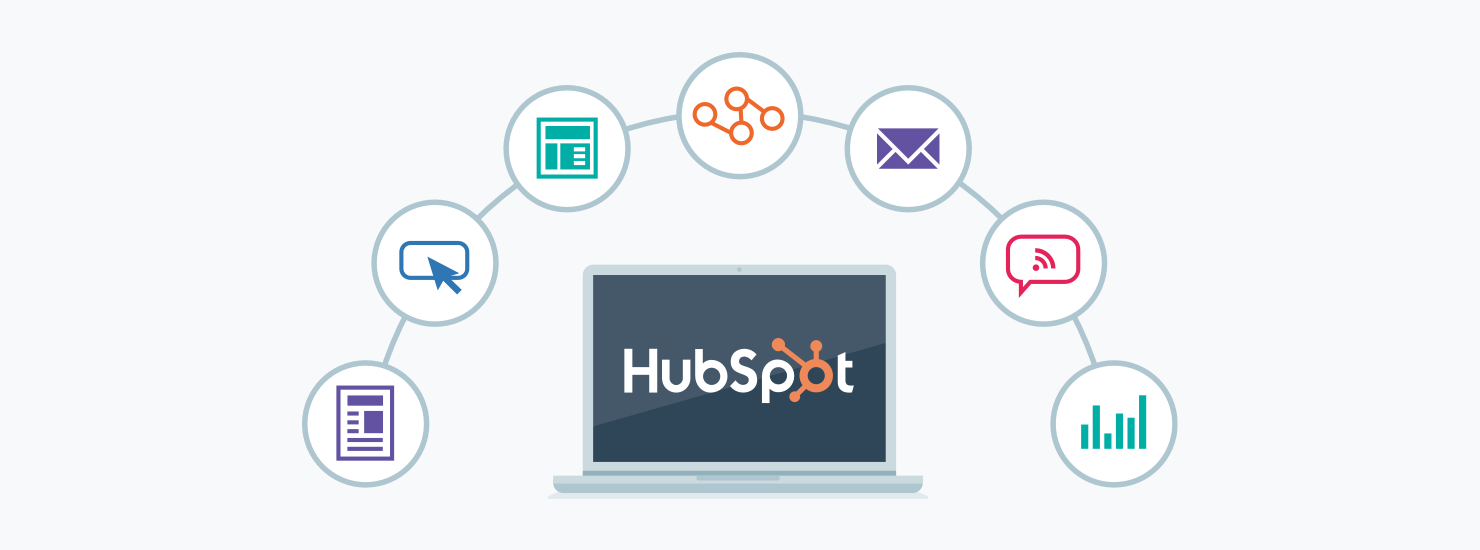Chances are you’ve heard a lot about inbound marketing the past few years. You’re probably using some inbound marketing tactics right now as part of your strategy. As technology has changed and the way people consume media has shifted, traditional marketing tactics are not as effective as they used to be. Inbound marketing came onto the scene to help address this problem, and in this post we’ll look at how.
- Inbound marketing vs outbound marketing: what’s the difference?
- Inbound marketing for the digital age
- How inbound marketing attracts customers in a different way
- Inbound marketing is a two-way street
- Inbound marketing is highly targeted
- Inbound marketing gives you data
- It’s all about the flywheel
- Just one more thing…
Inbound vs outbound marketing: what’s the difference?
Outbound marketing is a term that appeared about 10 years ago in response to the rise of inbound marketing. It’s also known as “interruption marketing,” (but you’re probably an inbound marketer if you’re calling it that). Outbound marketing uses what we think of as pre-internet marketing tactics such as TV and radio commercials, direct mail, telemarketing, and print advertising. These all seek to interrupt a person’s life to get them to pay attention to a message.
Once upon a time, marketing was about finding the channels that generally appealed to your target demographic. For example, most people know that top-40 radio stations have younger listeners, while the oldies station sees older listeners. Unfortunately, the data that backs these assumptions isn’t perfect, and for years it didn’t really need to be. Advertisers believed as long as you got the message out to a large group of people who might be interested, then it increased your company’s chances of catching the attention of those people most likely to become customers, and it did.
The problems with this approach is that it must interrupt people to be successful, and it is much less measurable than digital marketing. Unfortunately there’s only so much you can do with bright colors, moving graphics, and exuberant voice-overs until your commercial begins to resemble an ad for a monster truck rally. Or even worse, consumers learn to tune those ads out.
When the internet came along, outbound marketing became increasingly difficult. We digest media in a very different way than we did 20 years ago. A smart print ad in a premier magazine once got a lot of attention. Remember those Absolut Vodka ads college kids used to hang in their dorm rooms? TV and radio are completely different now, too. Streaming services, satellite radio, podcasts, DVRs, and massive YouTube traffic means a diluted audience that’s growing harder to reach. Inbound marketing allows marketers to offer help and resources, and yes, your sales message, but at the time your prospects are looking for it online.
Inbound marketing is a method of attracting new prospects to your business and nurturing them into becoming customers by providing them with helpful answers and solutions at every stage of the buyer’s journey. The focus is on meeting your potential customers where they are. This could be at the beginning stages when they’ve just realized they have a need or later in the process when they’ve spent months researching a product.
Inbound marketing for the digital age
A large part of meeting consumers where they are is acknowledging that today most consumers get most of their information from the internet.
Say I want to hire a dog sitter. Twenty years ago, I would head to the Yellow Pages, or ask a few friends. Today, I just Google, “dog sitter” or “dog sitter near me.” Later, I might hit social media for recommendations from friends. After getting a few names, I then look up reviews on Yelp or Google My Business until finally calling the dog sitter that’s best for my beagle. Below, you can see the results I got for “dog sitter.” Seeing that Sitter for Your Critter has great reviews (and a great name) I clicked on the website.
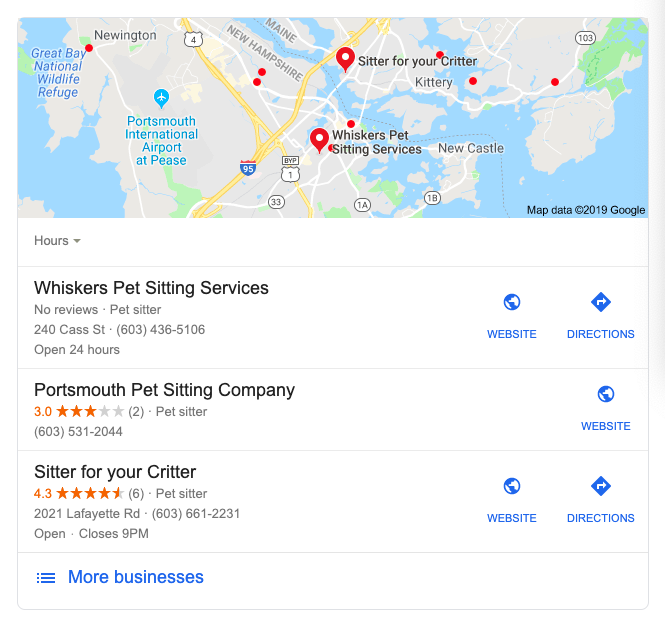
Once on the site, I could find pricing, a list of services, locations, and testimonials very easily. There’s a call-to-action front and center helping both new customers and repeat customers get to where they want to go on the site more quickly.

Inbound marketing is about increasing the likelihood that consumers will find you along the way, whether it’s by using SEO, positive online reviews, great content, or email communication. The idea is to entice potential customers to want to learn more about what your company does, and to show them your company can provide them with what they need. Then, once a potential customer gets to your site, inbound marketing tactics like great content and well-designed CTAs will help convert them into leads, and hopefully customers.
How inbound marketing attracts customers in a different way
We’ve already covered the traditional ways outbound marketing has reached people over the years, but what are some ways inbound marketing reaches people, especially if the goal is to entice?
Search engine optimization (SEO)
The first way is simply getting found online. With millions of websites out there, figuring out how to break through can seem overwhelming. Thankfully, we’ve got search engine optimization to help us.
SEO is sometimes viewed as this strange, enigmatic process instead of what it actually is—using what we know about how search engines are designed to achieve the best possible search results. By selecting keywords your customers are likely to search for and using them strategically on your website, you can make your site more relevant and ultimately increase its rank on the search engine results page.
Quality content
Ranking higher in search engine results will only get you so far. If the content on your website is click-bait, useless, or spammy, people will not stick around, if they click on the site link at all. And they certainly aren’t going to link to your site as a resource. Content makes the case not only on your website, but also in your email campaigns and social media, that your company knows what it’s talking about and has valuable information people can use to solve problems.
Content starts with your website, which should tell visitors what your company does and how you operate. It also includes your company blog, Ebooks, white papers, webinars, infographics, videos, and other content offers that gives consumers useful advice, and can also be used to capture contact information from visitors. Picking up the dog sitter metaphor again, a sitter using inbound tactics could post lots of pics of the dogs he’s sitting. He might also draw owners to his site by posting useful information on the best places to walk your dog or top off-leash beaches in the area. Or he could offer a downloadable guide on leash-training a puppy, requiring a name and email contact for access. Having information potential customers will want to read and use helps not only draw them to the site, but also builds trust that this dog sitter is knowledgeable, good with dogs, and good at his job.
Social media
Social media can be a great tool to spread your message, share content, and communicate with customers. It can also be a huge investment in time and creative resources. When it comes to organic social media (as opposed to paid advertising on social accounts) users typically see your content by opting in, and are already somewhat interested in your product. The job of the marketing team is to post content that shows those casually interested in a company that it provides exactly the kind of services and products the user is looking for. For dog owners, seeing cute pics of dogs from a local dog walking service, like this one posted by Dan’s Dog Walking and Pet Sitting in New York, keeps them engaged with your company, even if they are’t ready to buy yet.

Email is another medium that relies on people opting in to receiving the content. I’ve subscribed to so many travel newsletters, sale alerts, and community updates, I can’t keep up. (I see you 8,631 unopened emails.) Email is most effective further along the buyer’s journey, when a person is aware of her problem, has a few names in mind of companies that could help her, and is waiting for the right moment (or deal) to make her final decision.
Calls-to-action
A well-written, well-designed call-to-action should be convincing but not pushy, enticing but not click-baity, and promise something that has actual value. It could be providing content, or it could be as simple as, “sign up for our newsletter to receive $20 off your next purchase.”
Inbound marketing is a two-way street
One of the major drawbacks of outbound marketing is that it leaves very little opportunity for potential customers to interact with you when your product is top of mind. When I’m driving down the road and hear a radio commercial or see a billboard for an amusement park, I might wonder, how much is admission? What are its hours? Does it have rides for young kids? I’m not going to get an answer until I look it up online or give the place a call.
Same goes with direct mail or TV commercials. I might pause to look something up after I see it, but that’s a whole other step I need to take to connect to that product or service. It may sound silly to say, but commercials, billboards, and print ads aren’t interactive. You can’t type in a question or comment. There’s no direct mail chat widget (yet!). Outbound marketing is strictly a one-way street. Companies telling you what they want you to know and leaving it at that.
Inbound marketing techniques are grounded in digital media, allowing you to have a conversation with customers, often in real time, when they want to know more about a product, event, or service. Tools like Facebook Messenger, live chat, chat widgets, Twitter mentions and DMs, and email are all ways for people to communicate with your company quickly and on the customers’ own terms.
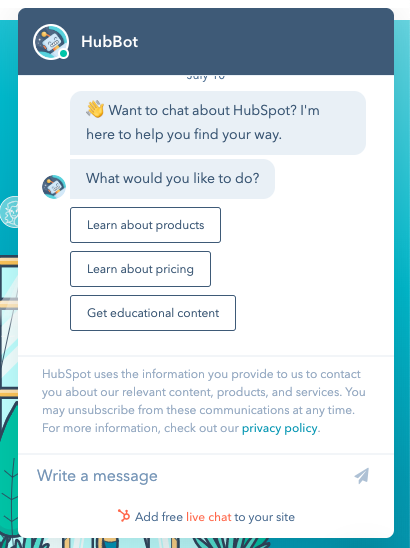
You’ve probably become familiar with the chat pop-up asking you, “What can I help you with today?” Take for example this chat prompt that appears when you scroll through a page on the HubSpot site. It’s asking first if the browser wants to chat. Low-pressure, right? The next prompt tries to narrow down what the browser is interested in by asking, “What would you like to do?” and then providing three choices.
This tools help save both consumers and the sales team time. The customer doesn’t have to spend an hour searching the website for what she’s looking for. She just asks. The sales reps then get a clearer idea of what this lead is looking for, and in some cases collects contact info to further nurture her along the buyer’s journey.
Digital tools give companies the ability to have one-on-one conversation on a wide range of channels, letting customers contact businesses when they want to and how they want to. By encouraging people to submit basic information through these communications, like email, you can continue to nurture leads with content that’s specifically targeted to their interests.
Inbound marketing is highly targeted
Back in the day when there were folks got their info from daily print-edition newspapers, businesses knew where to go to reach the people in their community. As we mentioned earlier, flood-the-zone advertising works because it reaches lots of people, but what happens when you want to reach only the people most likely to be interested in your products?
Here’s where the benefits of inbound marketing really become clear, especially if you’re the kind of person who’s focused on seeing marketing ROI in your campaigns. In the old days, you might be able to target certain demographics likely to watch a certain show, but there’s really no way of knowing who saw your commercial and if it had any impact on their perception of your company and willingness to buy. Thanks to analytics and a bevy of tools at your disposal, businesses today can pinpoint very specific customer attributes and use those demographics to target those consumers where they are. They can then examine the targeting efforts to see which worked best and find ways to improve the efforts that didn’t do so well.
For example, you can use HubSpot to track leads as they engage with your website, and then create email marketing lists to support campaigns targeted at specifics leads based on their attributes, such as lead type or buying preferences. This is a way to keep customers up-to-date on sales, promos, and new products by sending them only the content that’s highly relevant to them.
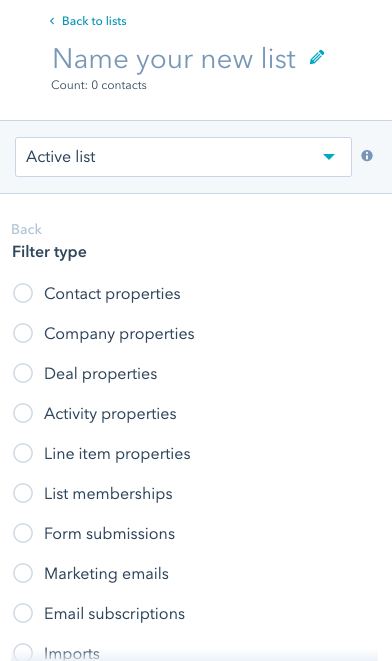
Effective targeting starts with a well-though-out inbound marketing strategy. One of the first steps is creating buyer personas, which allows your company to target content with a laser focus on your ideal customers. For each piece of content, decide which persona you are targeting and where this persona is along the buyer’s journey. This gives you lots of different ways to frame what you do and how you can help, focusing on all the various stages people are likely to interact with you. The goal here is to attract people at the early stage of the buyer’s journey, and build enough interest and trust that they will continue to engage through to the consideration and decision stages.
Using buyer personas will come in handy when creating social media content, too. It shows you which channels your customers are on and what kind of content they like to engage with (such as video, stories, links). Using this information to create a comprehensive social media calendar and design targeted posts, you’ll be more likely drive people to action.
Inbound marketing gives you data, too
These proactive approaches to reaching your audience are only part of the targeting picture. Inbound marketing tools give companies the ability to see how people are getting to their website and what pages people are looking at while they’re there. Using an all-in-one automation tool, like HubSpot, allows you to see how your whole campaign is performing, not just bits and pieces of it spread across different reports. You can also track interactions with contacts from lead to sale. (We are a HubSpot Agency Partner, so if you use HubSpot and want to know how to get more out of your subscription, we can certainly help.) And once you have the data showing you who is visiting your site and what content they are responding to best, you can use that information to create better targeted content to keep those leads engaged.
Most importantly, having this data allows you to set tangible, achievable goals your team can work toward, and lets you know through reporting whether you’ve met those goals.
It’s all about the flywheel
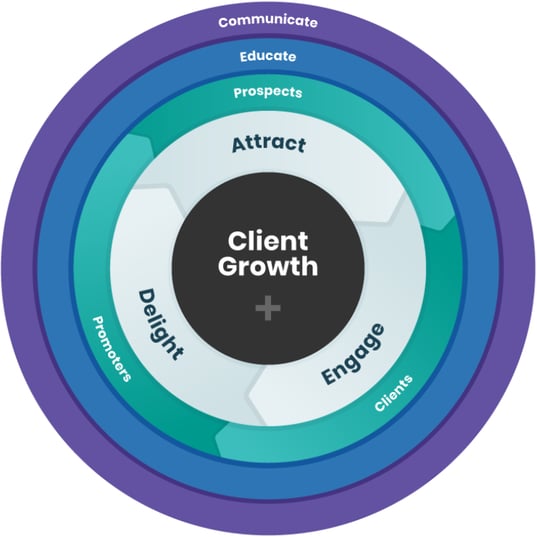
A flywheel is a machine component that can store kinetic energy and generate momentum. Once the friction points are removed and the proper amount of force is used, a flywheel will spin for a long time before it needs to be given another spin. If you think about the sales and marketing cycle as a flywheel, the focus is on using the momentum created by customers who promote your products or services in some way to attract the next round of customers. This can be done by encouraging positive online reviews, creating a brand ambassadors program, or offering a discount for a referral. Ideally, you’ll have a never-ending flow of customers who are happy enough with what you do to spread the word and keep that flywheel spinning.
Getting customers to be advocates for your business is more cost effective and far more powerful than any outbound marketing campaign.
Just one more thing …
We are all about using inbound marketing tactics to generate and nurture leads, as well as keep customers coming back for more. That doesn’t mean that all outbound marketing tactics are dead. There are plenty of ways paid advertising can complement inbound marketing strategies, especially if done strategically. While you may not be a complete inbound marketing convert, it’s pretty hard to deny the benefits inbound marketing brings to companies. We’ve seen it happen plenty of times, and are more than happy to talk to you about how to create an inbound marketing strategy for your business.

